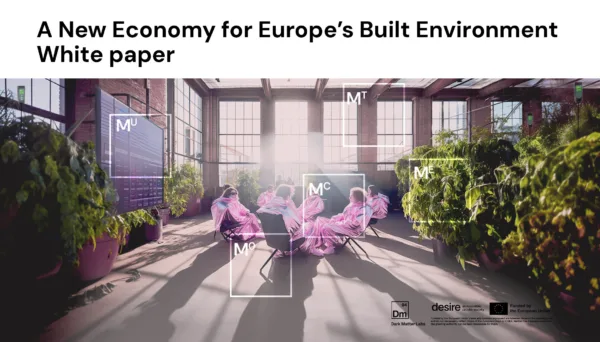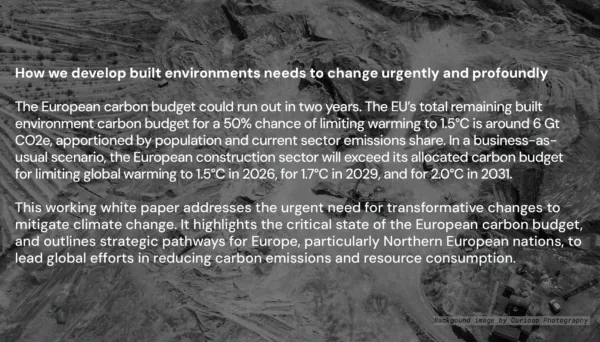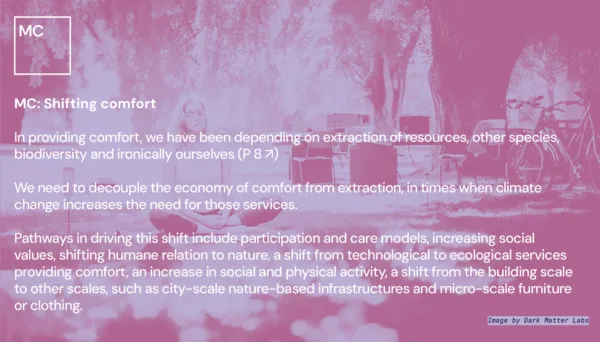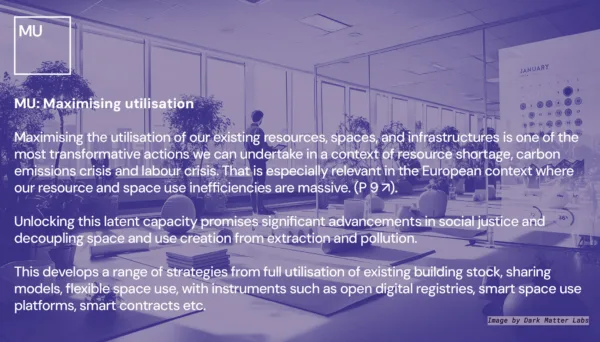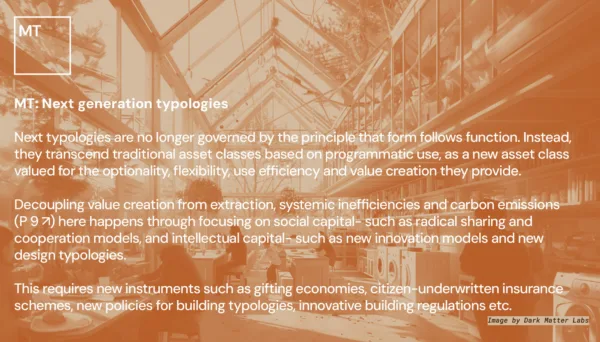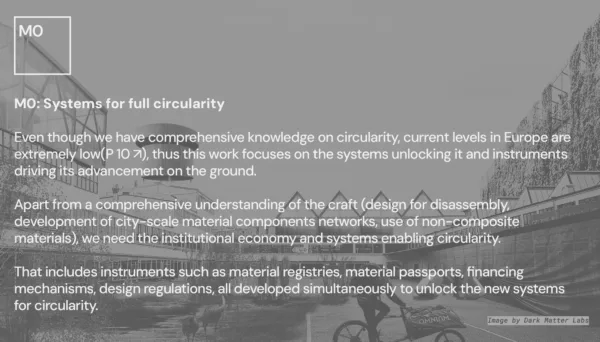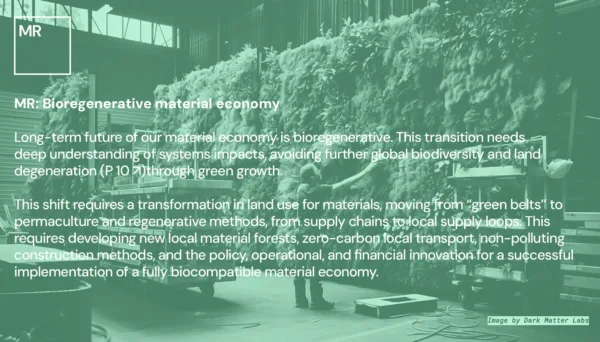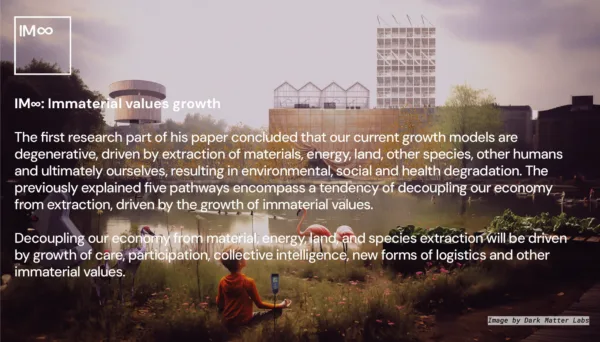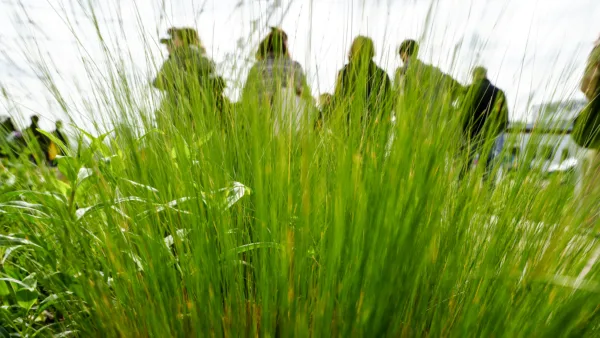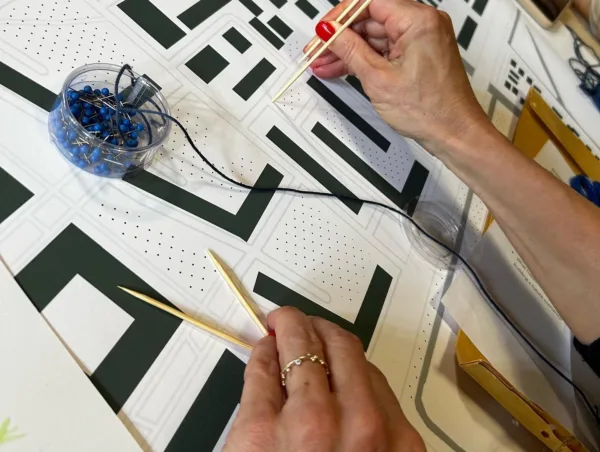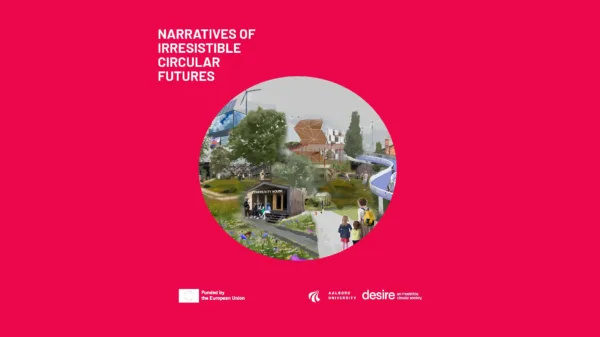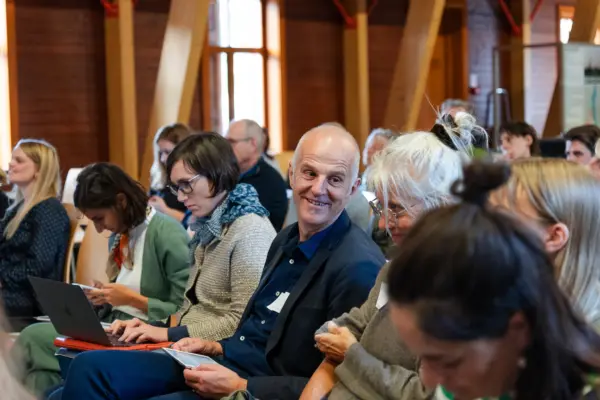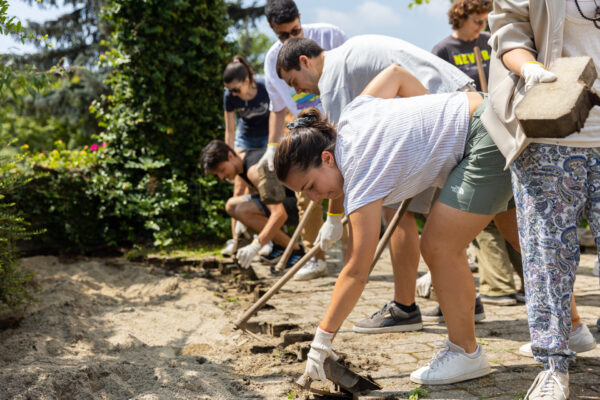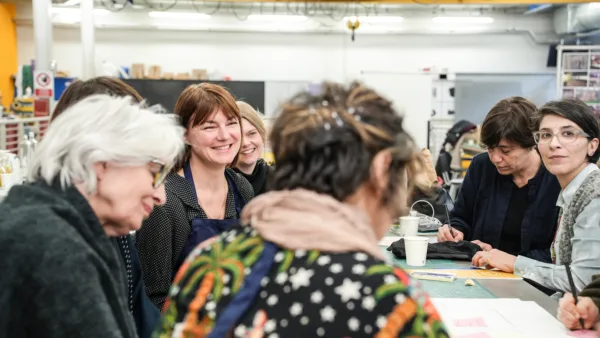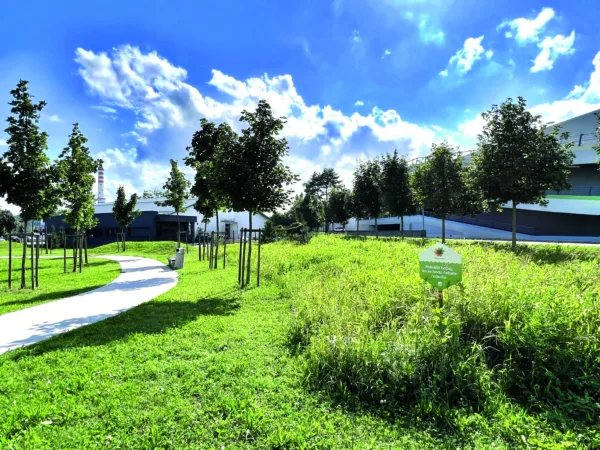Notice: Find the link to the White Paper as PDF at the bottom or click on the link above
Published: 10 September 2024
Dark Matter Labs has developed this Working White Paper as part of the New European Bauhaus lighthouse project Desire - Designing the Irresistible Circular Society.
The paper updates and adds to the contents of an Invitation Paper, published in July 2023 at the UIA Congress in Copenhagen. This white paper was first published in March 2024 for the New European Bauhaus Festival in Brussels (in April). This is the updated version of it.
The European carbon budget could run out in two years. The EU’s total remaining built environment carbon budget for a 50% chance of limiting warming to 1.5°C is around 6 Gt CO2e, apportioned by population and current sector emissions share. In a business-as-usual scenario, the European construction sector will exceed its allocated carbon budget for limiting global warming to 1.5°C in 2026, for 1.7°C in 2029, and for 2.0°C in 2031.
Limiting global warming to 1.5°C and staying within the planetary boundaries will require around 95% reduction of building emissions by 2029.
The role of Europe
The imperative for Europe to spearhead global environmental stewardship and innovation has never been more pronounced. Given its historical carbon footprint - one of the most significant on a global scale - Europe, particularly Northern European nations, bears a unique dual responsibility. These countries have not only been voracious consumers of the planet’s resources historically, but many continue to do so at an unsustainable rate.
The urgency for Europe to redefine its economic models and consumption patterns is multi fold, and it includes Enabling global sufficiency by significantly reducing its own resource consumption and carbon emissions; Pioneering new economic paradigms; Leading by example that prosperity can be decoupled from environmental degradation; Leveraging demand-side power as a powerful tool in reshaping global supply chains; Facilitating a just transition while moving away from its traditional unsustainable economic models, amongst others.
Europe's leadership in this transition is not optional but a necessity for the health of our planet. The continent's actions must set precedents and offer blueprints, and ultimately contribute to a global effort to combat climate change and environmental degradation.
Shifting innovation spaces: To effectively reduce the negative impact of our built environment, we need to shift the focus to new innovation spaces.
A new economy for our built environment evolves around a variety of hybrid and interacting models:
1. MC: Shifting comfort
In providing comfort, we have been depending on extraction of resources, other species, biodiversity and ironically ourselves (P 8 ↗)
We need to decouple the economy of comfort from extraction, in times when climate change increases the need for those services.
Pathways in driving this shift include participation and care models, increasing social values, shifting humane relation to nature, a shift from technological to ecological services providing comfort, an increase in social and physical activity, a shift from the building scale to other scales, such as city-scale nature-based infrastructures and micro-scale furniture or clothing.
2. MU: Maximising utilisation
Maximising the utilisation of our existing resources, spaces, and infrastructures is one of the most transformative actions we can undertake in a context of resource shortage, carbon emissions crisis and labour crisis. That is especially relevant in the European context where our resource and space use inefficiencies are massive. (P 9 ↗).
Unlocking this latent capacity promises significant advancements in social justice and decoupling space and use creation from extraction and pollution.
This develops a range of strategies from full utilisation of existing building stock, sharing models, flexible space use, with instruments such as open digital registries, smart space use platforms, smart contracts etc.
3. MT: Next generation typologies
Next typologies are no longer governed by the principle that form follows function. Instead, they transcend traditional asset classes based on programmatic use, as a new asset class valued for the optionality, flexibility, use efficiency and value creation they provide.
Decoupling value creation from extraction, systemic inefficiencies and carbon emissions (P 9 ↗) here happens through focusing on social capital- such as radical sharing and cooperation models, and intellectual capital- such as new innovation models and new design typologies.
This requires new instruments such as gifting economies, citizen-underwritten insurance schemes, new policies for building typologies, innovative building regulations etc.
4. M0: Systems for full circularity
Even though we have comprehensive knowledge on circularity, current levels in Europe are extremely low(P 10 ↗), thus this work focuses on the systems unlocking it and instruments driving its advancement on the ground.
Apart from a comprehensive understanding of the craft (design for disassembly, development of city-scale material components networks, use of non-composite materials), we need the institutional economy and systems enabling circularity.
That includes instruments such as material registries, material passports, financing mechanisms, design regulations, all developed simultaneously to unlock the new systems for circularity.
5. MR: Bioregenerative material economy
Long-term future of our material economy is bioregenerative. This transition needs deep understanding of systems impacts, avoiding further global biodiversity and land degeneration (P 10 ↗)through green growth.
This shift requires a transformation in land use for materials, moving from “green belts'' to permaculture and regenerative methods, from supply chains to local supply loops. This requires developing new local material forests, zero-carbon local transport, non-polluting construction methods, and the policy, operational, and financial innovation for a successful implementation of a fully biocompatible material economy.
IM∞: Immaterial values growth
The first research part of his paper concluded that our current growth models are degenerative, driven by extraction of materials, energy, land, other species, other humans and ultimately ourselves, resulting in environmental, social and health degradation. The previously explained five pathways encompass a tendency of decoupling our economy from extraction, driven by the growth of immaterial values.
Decoupling our economy from material, energy, land, and species extraction will be driven by growth of care, participation, collective intelligence, new forms of logistics and other immaterial values.
